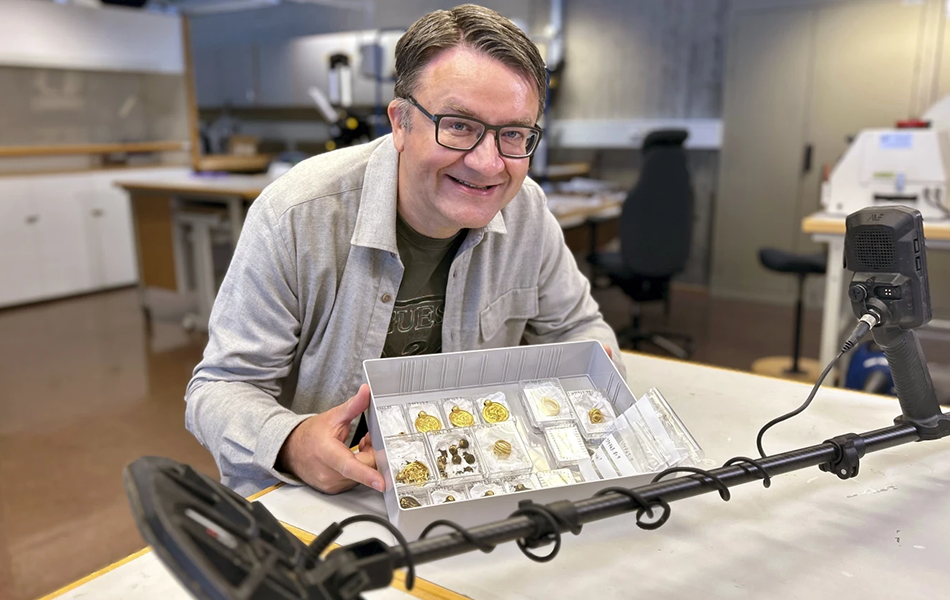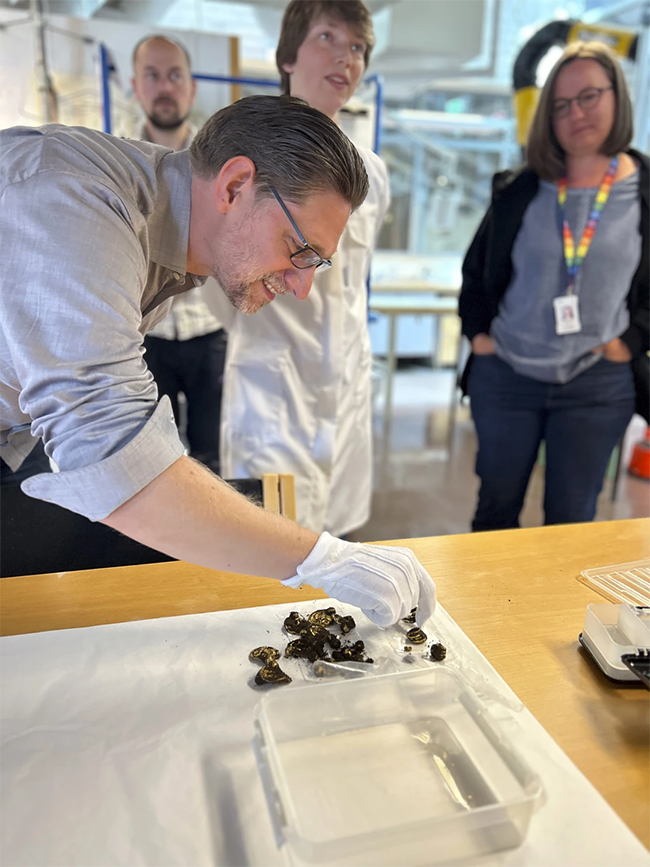The discovery included three gold rings, nine gold medallions, and gold pearls believed to once form an extravagant necklace. The jewellery has been dated to AD500.
Erlend Bore, 51, was out walking on his doctor's advice when he made the discovery in farmland.
“At first, I thought it was chocolate coins or Captain Sabertooth coins. It was totally unreal,” he said.
Archaeologists say the discovery is unique because of the design of the medallions, showcasing a type of horse from Norse mythology. In August, the jewellery was unearthed on the southern island of Rennesøy, near Stavanger.
Håkon Reiersen, an associate professor at the University of Stavanger’s Museum of Archaeology, said the gold pendants dated from the so-called migration period in Norway.
“Given the location of the discovery and what we know from other similar finds, this is probably a matter of either hidden valuables or an offering to the gods during dramatic times,” he told The Guardian.
“In Norway, no similar discovery has been made since the 19th century, and it is also a very unusual discovery in a Scandinavian context”.
Objects from before 1537 and coins dated before 1650 are considered Norweigan state property and must be reported to authorities when discovered.
GOLD DISCOVERY |
 |
| Erlend Bore with the newly discovered gold treasure. |
 |
| Three gold rings, nine gold medallions, and gold pearls believed to once form an extravagant necklace. |
 |
| Conservator Hege Hollund at the Archaeological Museum, University of Stavanger. |
 |
| Professor Sigmund Oehrl at the Archaeological Museum, University of Stavanger. |
More reading
Scientific breakthrough may revolutionise the hunt for diamonds
Diamond reveals new details of Earth’s interior
Did ancient sea creatures help create the Queen’s diamonds?
Strange diamonds found in meteorites
Long-lost jewellery discovered in shark-infested waters
Treasure hunters strike $1M gold bounty